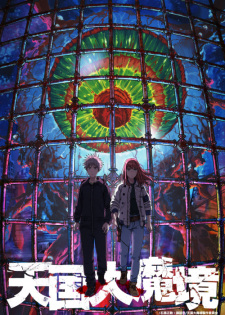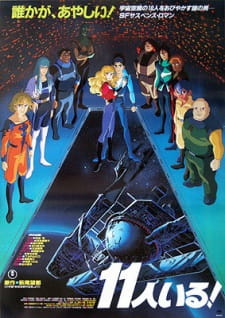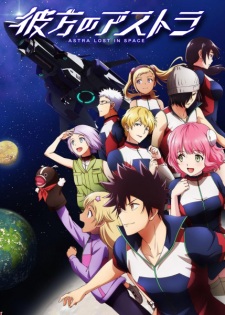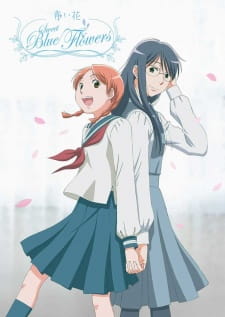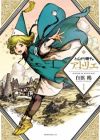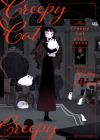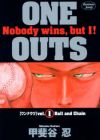Queerness and the Human Condition
Anime
Most LGBT anime people can name off the top of their head is romance—BL or GL. It tends to be very sweet and cutesy. And while sweet and cutesy romance is something absolutely necessary to have and I’m glad we can have it, here are some stories that feature queerness in a much more serious manner with more mature storylines and themes that speak to one’s humanity. It may be traumatic and messy, but it is human.
Stack is mostly relegated to canon representation but exceptions are made. Stack is also open to suggestions.
Stack is mostly relegated to canon representation but exceptions are made. Stack is also open to suggestions.
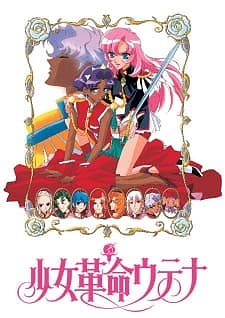
TV, 1997,
39 eps
Me:-
Author:10
Revolutionary Girl Utena is considered a classic for good reason. It explores the nature of gender and womanhood and what that means for one’s place in the world. The main character is a woman who desires to be a “prince” and accidentally ends up engaged to the “rose bride” through dueling. The relationship between these two female characters is the center of the show as it also speaks to topics such as sexual abuse, abuse of power, and gender roles. Beyond our main couple, there is another notable lesbian character and her relationship to another girl is vital to her character. Queerness amongst men is also explored, albeit more subtextually and in the case of abuse.
The movie companion to the series does more to make the focal WLW relationship explicit, involving multiple kisses and more intimate scenes.
The movie companion to the series does more to make the focal WLW relationship explicit, involving multiple kisses and more intimate scenes.
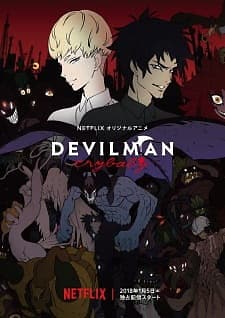
ONA, 2018,
10 eps
Me:-
Author:9
Devilman Crybaby is a modern take on Go Nagai’s classic manga from the 70s that changed manga forever. It is visceral and raw, and somehow a shounen manga despite all of the gore and nudity. The relationship between our main character, the Devilman himself, and his best friend is what starts and ends the series. Ryo’s love for Akira is a powerful force.
One could argue that the relationship between our male leads is reduced to subtext, but it was always meant to be there. The manga received a spin-off in which Ryo says with words that he is not interested in women. The concept of gender and sex is also played with towards the end.
This series also adds a very explicit exploration of queerness amongst other, anime-original side characters, as it’s the perfect setting to do so---because Devilman has always been a story about the horrors of what humanity does to each other, primarily as an anti-war story but themes of discrimination and prejudice have always been present, just upped for the modern day as it grows more and more topical.
One could argue that the relationship between our male leads is reduced to subtext, but it was always meant to be there. The manga received a spin-off in which Ryo says with words that he is not interested in women. The concept of gender and sex is also played with towards the end.
This series also adds a very explicit exploration of queerness amongst other, anime-original side characters, as it’s the perfect setting to do so---because Devilman has always been a story about the horrors of what humanity does to each other, primarily as an anti-war story but themes of discrimination and prejudice have always been present, just upped for the modern day as it grows more and more topical.
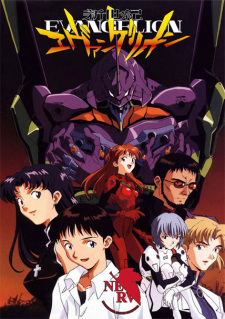
TV, 1995,
26 eps
Me:-
Author:8
An anime that, perhaps, needs no introduction.
Kaworu Nagisa is a character whose presence is felt by everyone in the anime community. He may have had an extremely short amount of screentime but he left an undeniably massive impact. His feelings for Shinji are known when he says them (although toned down by the Netflix dub, and purposefully meant for interpretation) and it plays into the many, many darker themes NGE delves into. With Kaworu being directly inspired by Ryo of Devilman, that should clue you in to the goal. With NGE being a show about the human condition itself, an exploration of love and attraction is necessary, and it's no surprise it looks at it from a queer perspective.
The manga ups the explicitness of their relationship, and the movies explore it more in-depth, although it should be notes his role in the original show is extremely small despite his massive impact.
Kaworu Nagisa is a character whose presence is felt by everyone in the anime community. He may have had an extremely short amount of screentime but he left an undeniably massive impact. His feelings for Shinji are known when he says them (although toned down by the Netflix dub, and purposefully meant for interpretation) and it plays into the many, many darker themes NGE delves into. With Kaworu being directly inspired by Ryo of Devilman, that should clue you in to the goal. With NGE being a show about the human condition itself, an exploration of love and attraction is necessary, and it's no surprise it looks at it from a queer perspective.
The manga ups the explicitness of their relationship, and the movies explore it more in-depth, although it should be notes his role in the original show is extremely small despite his massive impact.
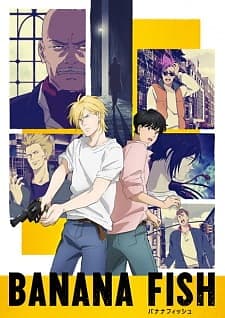
TV, 2018,
24 eps
Me:-
Author:4
A harrowingly grounded tale of organized crime and the trauma therein. The focal point of the series is the relationship between the two male leads and how it is affected by one’s dangerous lifestyle and the sexual abuse he has suffered in the past.
Relationship is not 100% explicit but it is undeniably real.
Naturally, TW for any of the above content mentioned
Relationship is not 100% explicit but it is undeniably real.
Naturally, TW for any of the above content mentioned
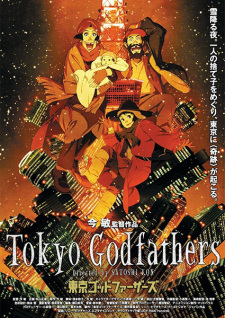
Movie, 2003,
1 ep
Me:-
Author:9
This is a movie about the bond between three homeless people and their goal to reunite a lost child with its mother. While it shows you the beauty and love of humanity in the worst circumstances, it also shows you a very realistic representation of “okama” culture and both the hardships and beauty of that lifestyle.
One of the main characters is meant to be an “okama” type (“okama” is traditionally a derogatory word used for transgender women and feminine gay men alike, although it’s reclaimed as an identity by some). Traditionally she’s referred to as a transgender woman by western viewers and that isn’t wrong, however her identity and the culture she participates in shows the overlap between gay men and transgender women that has always existed and how the lines between them blur.
It shows the hardships of her life as well as the beauty in it and the relationships she has within her community and without.
One of the main characters is meant to be an “okama” type (“okama” is traditionally a derogatory word used for transgender women and feminine gay men alike, although it’s reclaimed as an identity by some). Traditionally she’s referred to as a transgender woman by western viewers and that isn’t wrong, however her identity and the culture she participates in shows the overlap between gay men and transgender women that has always existed and how the lines between them blur.
It shows the hardships of her life as well as the beauty in it and the relationships she has within her community and without.
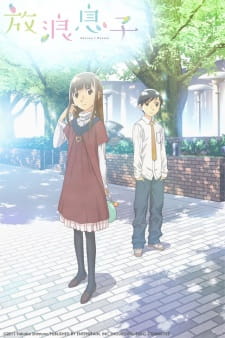
TV, 2011,
11 eps
Me:-
Author:8
A very real representation of what it was like to be a transgender child in the early 21st century when the reality was not as known as it is today. The anime explores gender identity and sexuality and how that factors into one’s coming of age with sensitivity and grace.
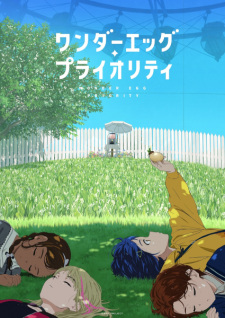
TV, 2021,
12 eps
Me:-
Author:8
This is another anime that explores what it means to be a woman—or, more precisely, a girl, as the mental health of teenage girls is the focus.
One of the main characters frequently gets mistaken for a man, and as such is commonly read as transgender. She attracts much female attention, but she’s aware it’s because of her masculine presentation, and shows no interest in women. She then meets transgender male character who she connects with and forms a romantic connection with, even if the inherent premise of the show means it cannot last. While her gender is up to interpretation, the parallels and connections between her and the transmasculine character are undeniable.
There is also much romantic subtext between the other female characters, although that’s inevitable, and between male characters near the end.
Warning for sexual abuse, suicide, and self-harm.
Keep in mind the ending of this series is not popular.
One of the main characters frequently gets mistaken for a man, and as such is commonly read as transgender. She attracts much female attention, but she’s aware it’s because of her masculine presentation, and shows no interest in women. She then meets transgender male character who she connects with and forms a romantic connection with, even if the inherent premise of the show means it cannot last. While her gender is up to interpretation, the parallels and connections between her and the transmasculine character are undeniable.
There is also much romantic subtext between the other female characters, although that’s inevitable, and between male characters near the end.
Warning for sexual abuse, suicide, and self-harm.
Keep in mind the ending of this series is not popular.
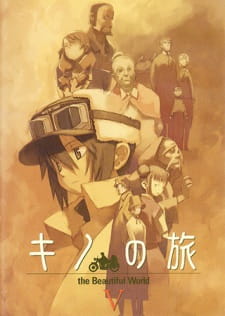
TV, 2003,
13 eps
Me:-
Author:10
This anime is about a traveler who explores the world and sees some of the ugliest but also most beautiful facets of humanity. This traveler is also, in every sense except saying the word, nonbinary. They are assigned female at birth but intentionally took on a masculine name and more androgynous appearance as they grew older, and object to being called both “boy” and “miss.” The backstory OVA shows how they came upon their more androgynous presentation, including switching from atashi to boku.
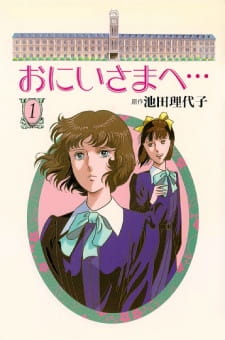
TV, 1991,
39 eps
Me:-
Author:-
A serious, grounded story about bullying and how people hurt each other wrapped up nicely with WLW romance. This one delves deep into the girls it shows you and their relationships with one another.
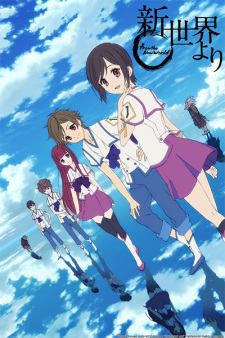
TV, 2012,
25 eps
Me:-
Author:8
Queerness in a dystopian post apocalyptic future.
This is an interesting take, as it shows a society where, to a degree, polyamorous bisexuality is the norm up until a certain point where you are expected to have a life partner.
While these children are trying to fight the system and live in this hellish future, they are also coming of age and growing into their feelings. Our main friend group of both males and female have a lot of overlapping feelings and their love for each other, for multiple people at once and regardless of gender, is important to the plot.
This is an interesting take, as it shows a society where, to a degree, polyamorous bisexuality is the norm up until a certain point where you are expected to have a life partner.
While these children are trying to fight the system and live in this hellish future, they are also coming of age and growing into their feelings. Our main friend group of both males and female have a lot of overlapping feelings and their love for each other, for multiple people at once and regardless of gender, is important to the plot.
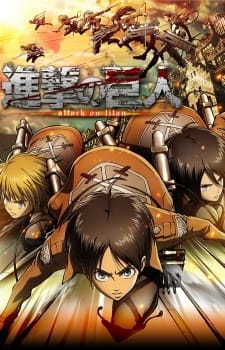
TV, 2013,
25 eps
Me:-
Author:6
Attack on Titan is not a queer series in and of itsef, but one cannot deny the queerness within it.
Amongst the remains of humanity fighting for their lives is a very explicitly lesbian character and it explores her relationship with another woman, and her desire to marry her. It’s very tragic as visceral, as is everything in the series. Humanity has gone to ruin and lesbians are still doomed by the narrative.
Hange is also intended as a nonbinary character, but the anime makes them more female presenting.
Series is also controversial for how it reflects on real-world events in the later seasons, so keep that in mind.
Amongst the remains of humanity fighting for their lives is a very explicitly lesbian character and it explores her relationship with another woman, and her desire to marry her. It’s very tragic as visceral, as is everything in the series. Humanity has gone to ruin and lesbians are still doomed by the narrative.
Hange is also intended as a nonbinary character, but the anime makes them more female presenting.
Series is also controversial for how it reflects on real-world events in the later seasons, so keep that in mind.

TV, 2017,
12 eps
Me:-
Author:7
In a post apocalypse where humanity has been wiped out, what remains—what was born from humanity’s ruin—is something so much like humanity but so unlike it.
The gemstone humanoids are all androgynous, with flat chests but wide hips and referred to with androgynous language. In Japanese they use masculine language, which directly contrasts the way most of them have feminine faces and haircuts.
Debatable on the representation front because they are nonhuman but they come from the remains of humanity.
The anime ends right when the manga really starts to explore existential themes, so you may want to keep that in mind.
The gemstone humanoids are all androgynous, with flat chests but wide hips and referred to with androgynous language. In Japanese they use masculine language, which directly contrasts the way most of them have feminine faces and haircuts.
Debatable on the representation front because they are nonhuman but they come from the remains of humanity.
The anime ends right when the manga really starts to explore existential themes, so you may want to keep that in mind.
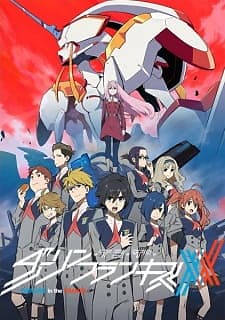
TV, 2018,
24 eps
Me:-
Author:7
All of the hot takes about this series aside, you cannot deny that it explores what it means to be human in the…post apocalypse (…how common is this??) and what it means to come of age and grow into your sexuality—both into your attraction in general as well as your orientation.
Very explicit lesbian character and it explores her feelings for another woman and how that plays into this society’s paring of men and women as the kids all grow into their sexuality.
Very explicit lesbian character and it explores her feelings for another woman and how that plays into this society’s paring of men and women as the kids all grow into their sexuality.
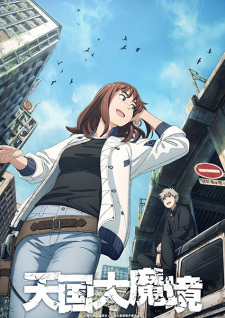
TV, 2023,
13 eps
Me:-
Author:8
Queerness in the post-apocalypse seems to be a theme.
This is another one set in a sci-fi post apocalyptic word, with the sci-fi comes an absolutely fascinating exploration of gender/gender identity and how romantic/sexual attraction plays into it in a way that isn't quite trans, but is absolutely worth mentioning.
It also has multiple displays of homosexuality in a world where children are not taught about the concepts of love and attraction and have to figure it out themselves.
This one also requires a trigger waning for SA
This is another one set in a sci-fi post apocalyptic word, with the sci-fi comes an absolutely fascinating exploration of gender/gender identity and how romantic/sexual attraction plays into it in a way that isn't quite trans, but is absolutely worth mentioning.
It also has multiple displays of homosexuality in a world where children are not taught about the concepts of love and attraction and have to figure it out themselves.
This one also requires a trigger waning for SA
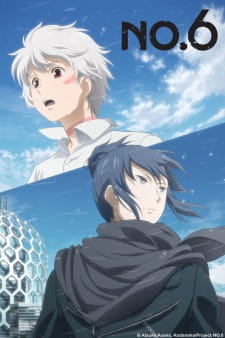
TV, 2011,
11 eps
Me:-
Author:7
Another tale of queerness in the post apocalypse, the relationship between the two male leads is undeniable. I don’t know how many times I can say this

TV, 2012,
22 eps
Me:-
Author:7
While not the main focus, Psycho-Pass does take its time to show WLW characters and chew on what that means in this…dystopian society (again? Damn). Psycho-Pass takes a lot of time to comment on society and humanity and there is a queer aspect to it.
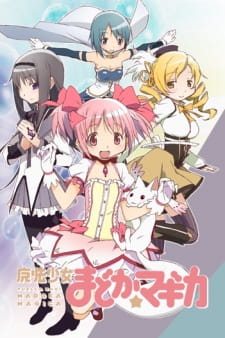
TV, 2011,
12 eps
Me:-
Author:9
Another anime that, perhaps, needs no introduction.
This one is definitely reduced to subtext but it feels like some sort of queer sin not to include it.
The brutality of this anime is known amongst the community in droves, and it all ties into the intimate relationship between two female characters.
I cannot say much else without spoiling the series rotten. You just have to watch it.
It is, to some, considered a spiritual successor to Revolutionary Girl Utena.
This one is definitely reduced to subtext but it feels like some sort of queer sin not to include it.
The brutality of this anime is known amongst the community in droves, and it all ties into the intimate relationship between two female characters.
I cannot say much else without spoiling the series rotten. You just have to watch it.
It is, to some, considered a spiritual successor to Revolutionary Girl Utena.

TV, 2019,
24 eps
Me:-
Author:8
The queerness takes a backseat in this one, but is absolutely relevant given the show’s political nature. It’s a series about using music to make change in a controversial political climate, and queerness has always been intertwined with that. One of the supporting characters is an older lesbian who only discovered her sexuality later in life after having been married to a man, and she’s a supporter of the main characters in their goal.
There’s also an exploration of gender and sex with more minor/supporting characters, and there is undeniable queer subtext between the lead women.
There’s also an exploration of gender and sex with more minor/supporting characters, and there is undeniable queer subtext between the lead women.
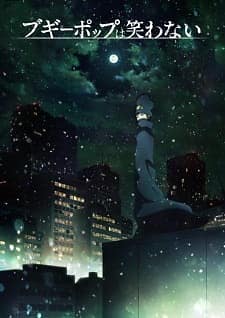
TV, 2019,
18 eps
Me:-
Author:7
The titular character, Boogiepop, is presented as androgynous, though masculine leaning and inhabiting the body of a woman. Generally, Boogiepop is regarded as neither male nor female. Questionable DID rep abound but by god is it ambiguously gendered. Boogiepop generally spends the series stopping no-gooders who are committing crimes against humanity and the like. Quite bleak.
There’s also a minor male character who has feelings for another male character. It didn’t amount to that much, but considering the light novels are from the 90s, how progressive.
There’s also a minor male character who has feelings for another male character. It didn’t amount to that much, but considering the light novels are from the 90s, how progressive.

TV, 2017,
13 eps
Me:-
Author:7
While controversial in how it portrays this, Made in Abyss shows some of the grossest, ugliest parts of being alive. A main character is presented as completely androgynous, and while they are not human, they once were. Also has a lesbian relationship although the anime toned down how explicit it is.
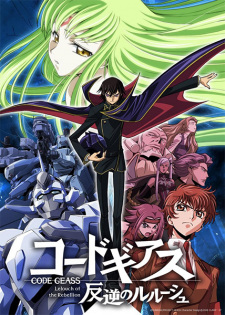
TV, 2006,
25 eps
Me:-
Author:10
This is the only psycho lesbian character who actually works.
Code Geass is a very big and ambitious series about war and racism, so it’s no surprise queerness also plays a part. While the lesbian character’s portrayal is controversial (she can pretty unanimously be called worst girl, for she truly is the worst), the argument can be made that there is real value in what her attraction represents and doesn’t strictly have anything to do with her sexuality per say. Her skewed attraction for the princess has roots in something real and sinister.
The queer subtext between other characters cannot be denied as well. And, of course, it plays into all of the war and racism.
Code Geass is a very big and ambitious series about war and racism, so it’s no surprise queerness also plays a part. While the lesbian character’s portrayal is controversial (she can pretty unanimously be called worst girl, for she truly is the worst), the argument can be made that there is real value in what her attraction represents and doesn’t strictly have anything to do with her sexuality per say. Her skewed attraction for the princess has roots in something real and sinister.
The queer subtext between other characters cannot be denied as well. And, of course, it plays into all of the war and racism.
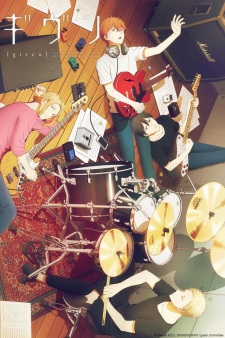
TV, 2019,
11 eps
Me:-
Author:7
While this appears to be a regular romance anime at first, it soon reveals its much deeper themes of grief and mental health alongside its queer romance.
TW for suicide.
TW for suicide.
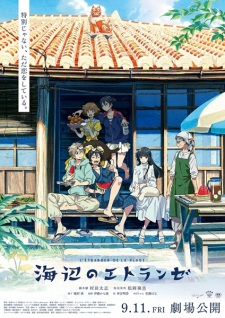
Movie, 2020,
1 ep
Me:-
Author:7
This is a standard gay romance, but it takes time to dig into the homophobia of it, and how that deeply affects these characters and their relationships. The drama present is one that is deeply familiar and real to many members of the queer community.
May be controversial because of the age difference between the leads.
May be controversial because of the age difference between the leads.
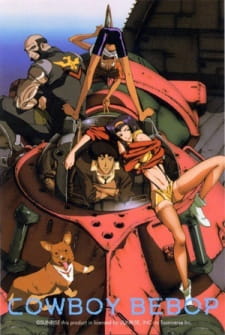
TV, 1998,
26 eps
Me:-
Author:9
Given that this anime and Carole and Tuesday share a universe, this should not be surprising. And also given that it was made in the 90s, Cowboy Bebop could not give us what Carole and Tuesday did, but there is one episode about a gay man that tells his story, delving into his relationship with another man with implied feelings on his end. Also slightly explores sex and gender.
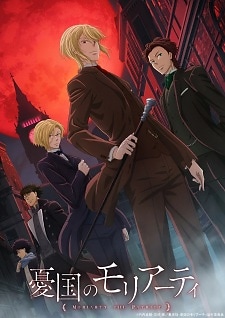
TV, 2020,
11 eps
Me:-
Author:6
It's a dark, conspiracy-heavy mystery series, which is a given as it's a loose adaptation of both Sherlock Holmes and James Bond. It's no adaptation of Sherlock Holmes without gay subtext, of course, but it also openly sports a transmasculine character
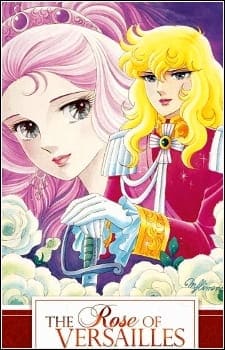
TV, 1979,
40 eps
Me:-
Author:8
A precursor to Revolutionary Girl Utena, this is another one that blurs gender roles and explores what it means to be a woman, if a woman can be a “prince,” and what that means for one’s place and relationships. An absolute classic that laid the groundwork for what came ahead.
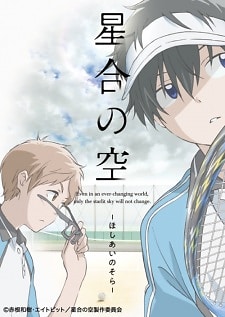
TV, 2019,
12 eps
Me:-
Author:8
While it may be unexpected of a sports anime, it takes the time to explain gender identity and what that means for multiple characters, and treats it with sensitivity and care amongst life and its happenings.

TV, 2016,
12 eps
Me:-
Author:-
Danganronpa is…messy
Firstly, this is a sequel to the Danganronpa visual novels, so take this as me throwing the Danganronpa series as a whole on this list.
And as said, it’s messy and controversial, however it also deserves a spot on this list.
Danganronpa is a very dark series that, rather than wallowing in that darkness, shows the light at the end of the tunnel and the importance of not giving up on humanity and your comrades---and within all of that this iteration of the franchise has an openly gay character, and his feelings for another man play a big part in the plot.
Danganronpa is also famous for some of its gay subtext, especially regarding one character who falls into the Ryo/Kaworu archetype. This particular character and his subtext definitely gets his moments in this series.
Firstly, this is a sequel to the Danganronpa visual novels, so take this as me throwing the Danganronpa series as a whole on this list.
And as said, it’s messy and controversial, however it also deserves a spot on this list.
Danganronpa is a very dark series that, rather than wallowing in that darkness, shows the light at the end of the tunnel and the importance of not giving up on humanity and your comrades---and within all of that this iteration of the franchise has an openly gay character, and his feelings for another man play a big part in the plot.
Danganronpa is also famous for some of its gay subtext, especially regarding one character who falls into the Ryo/Kaworu archetype. This particular character and his subtext definitely gets his moments in this series.
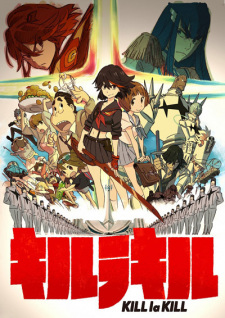
TV, 2013,
24 eps
Me:-
Author:7
Like many other entries, being a girl and what that means is a relevant theme in Kill la Kill, so the relationship between the leading women is not lacking in queer department
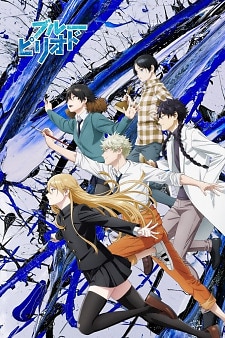
TV, 2021,
12 eps
Me:-
Author:-
A dramatic series that delves deep into the characters’ thoughts and feelings and experiences which takes the time to explore gender and sexuality with one of its side characters.
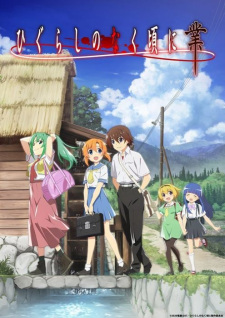
TV, 2020,
24 eps
Me:-
Author:8
This controversial sequel to the Higurashi visual novel/2006 anime stakes itself on the relationship between two women---one in which the creator said he doesn't define it as yuri because it's MORE than romance, and he doesn't want people reducing it.
For the record, you should not watch this if you have not seen/read the original, as despite the fact it looks like a reboot at first, it's a direct sequel. And furthermore, it doesn't get into the yuri until the second season (Higurashi Sotsu) which is very controversial in the fandom.
However, nonetheless, I personally highly recommend Higurashi in general for being such a well-written mystery series about the trust and love between a group of friends that conquers the corruption plaguing them, and though I see why this sequel is so widely disliked and agree with a lot of the criticism, I do still appreciate it for delving into the complicated relationship between these two young women and how their trauma lead to an even more traumatic situation and toxic relationship because they just could not let go of each other.
For the record, you should not watch this if you have not seen/read the original, as despite the fact it looks like a reboot at first, it's a direct sequel. And furthermore, it doesn't get into the yuri until the second season (Higurashi Sotsu) which is very controversial in the fandom.
However, nonetheless, I personally highly recommend Higurashi in general for being such a well-written mystery series about the trust and love between a group of friends that conquers the corruption plaguing them, and though I see why this sequel is so widely disliked and agree with a lot of the criticism, I do still appreciate it for delving into the complicated relationship between these two young women and how their trauma lead to an even more traumatic situation and toxic relationship because they just could not let go of each other.
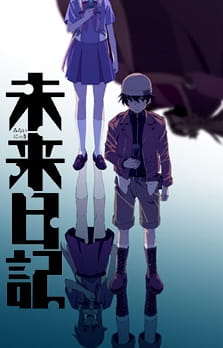
TV, 2011,
26 eps
Me:-
Author:4
The queerness of Mirai Nikki is controversial at best, but worth including because it fits the criteria.
There is an explicitly gay character who does a lot for the object of his attraction. He harkens back to the Ryo/Kaworu archetype, although how well he follows in their footsteps is debatable
There is an explicitly gay character who does a lot for the object of his attraction. He harkens back to the Ryo/Kaworu archetype, although how well he follows in their footsteps is debatable
